A short drive around Chico's various neighborhoods will convince you that people love their front lawns. They must, because the lawn is the most prominent landscape feature for the vast majority of homes. And yet, we seldom see people outside actually using their front lawn spaces. Maintaining a lawn just to view through your front picture window wastes time, energy, water and money. According to a 2011 study sponsored by the California Department of Water Resources (the “California Single Family Water Use Efficiency Study”), the average household in the state uses 360 gallons of water per day, around 50% of which is used outdoors. Replacing the lawn with waterwise landscaping can reduce outdoor water use by 30-70%. In addition, lawns need to be frequently mowed, fertilized and weeded, thus racking up additional costs. So replacing or significantly reducing lawn can result in considerable savings.
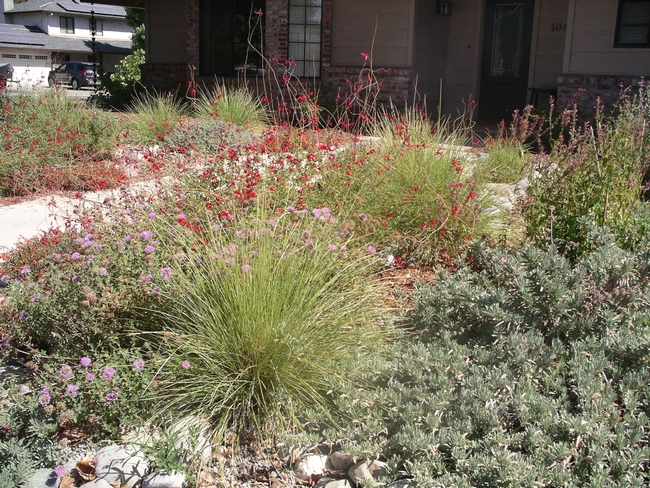
Start your design with hardscaping. Hardscaping can include walkways, gravel paths, small patios or decks, dry creek beds and retaining walls. These provide visual interest and also reduce the area that needs to be irrigated. Plan a pleasing and obvious way to get to your front door. You can edge the walkway with plantings in the ground or in urns at intervals along the way. Meandering gravel paths provide a functional and low cost way to move about the garden to observe plantings more closely. A small patio allows you to relax and enjoy a cup of tea in the yard. Dry creek beds and small retaining walls are features that separate planting areas and provide elevation changes in the yard. You can also use an edging of stone or brick to separate planting areas.
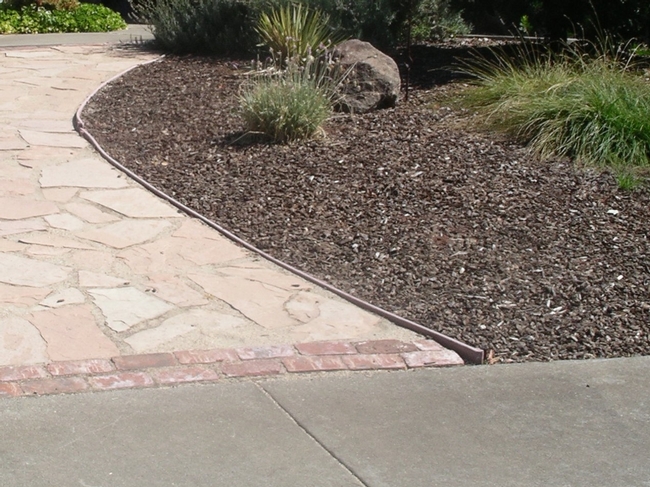
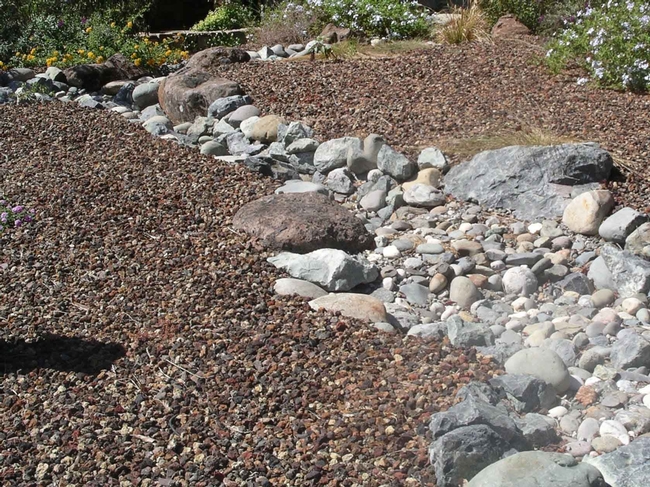
The New Sunset Western Garden Book and Calscape (the California Native Plant Society's online database of native plants) are good sources of horticultural information about waterwise plants. If your yard will be irrigated with an automatic system, it makes sense to group together plants with similar water needs. The UC Cooperative Extension WUCOLS database allows you to estimate the water needs of thousands of garden plants grown in the Chico area. This database is a valuable tool for grouping plants into zones based on their water needs.
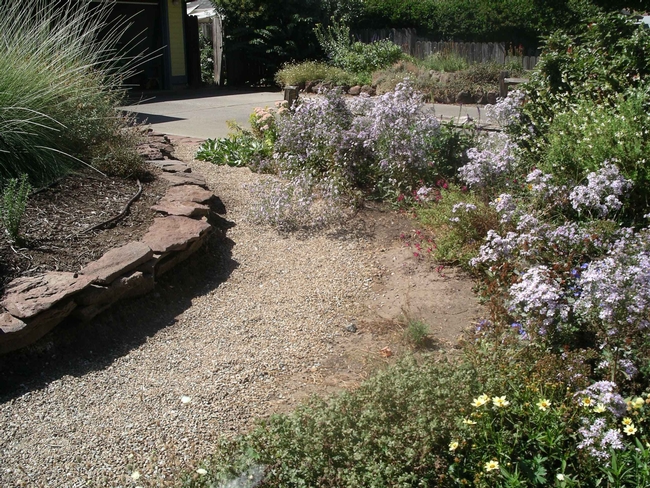
Mulching the bare spots will help to conserve moisture by reducing evaporation and controlling weeds. You can use organic mulch (like shredded bark) or inorganic mulch (like gravel or small rocks). Keep organic mulch a few inches away from the trunks of trees and plants. Excessive moisture that is trapped by mulch too close to the trunk can lead to fungal diseases in the plant. Inorganic mulch can itself become a design element, for example by using different sizes or colors of rocks in different areas.
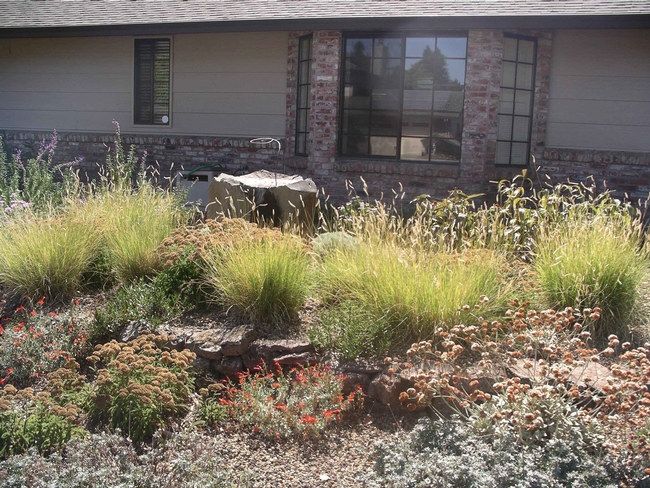
To learn more about UC Butte County Master Gardeners and their upcoming events, and for help with gardening in our area, visit our website. If you have a gardening question or problem, call our Hotline at (530) 538-7201 or email mgbutte@ucanr.edu.